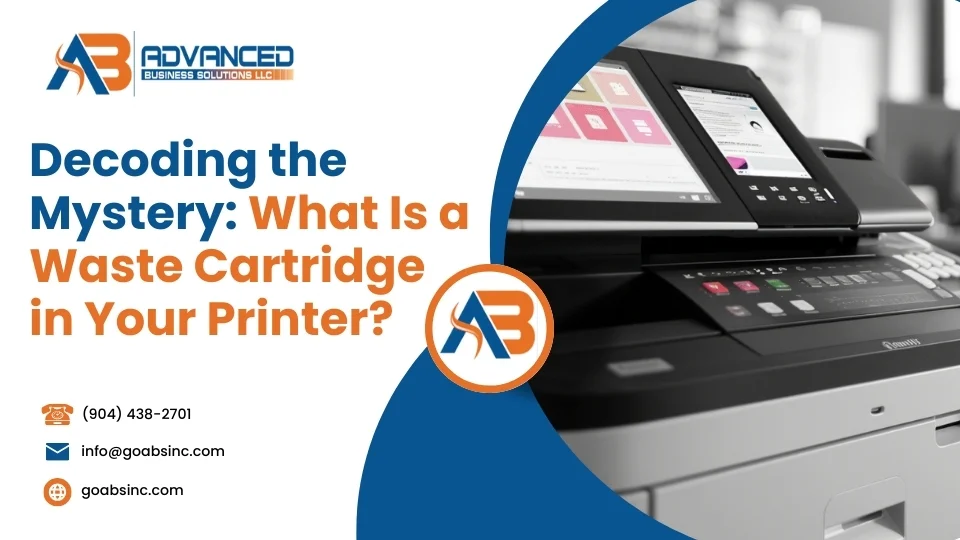Document management solution providers are rapidly changing how businesses handle their information. In today’s digital world, effectively managing documents is more crucial than ever for productivity and efficiency. Leading companies in this field provide tools that not only store and organize data but also simplify the entire content lifecycle. This helps businesses streamline work, reduce paper clutter, and automate processes.
- Organized Document Storage: No more searching through piles of paper.
- Efficient Workflow Automation: Simplifies repetitive tasks.
- Improved Collaboration Tools: Teams work together effortlessly from anywhere.
The shift to a paperless office environment is no longer just an idea; it’s becoming a reality. Remote work is rising, and businesses need efficient solutions to manage digital content. Office Manager Olivia, for example, seeks such solutions to improve operations in her mid-sized company in Florida. Whether you’re in legal, creative, or any other industry, investing in a robust document management system can transform your workflow. With continuous advancements and growing adoption, these solutions are leading the pack in digitizing businesses.

Understanding Document Management Solutions
A document management system (DMS) is essential for businesses to handle their electronic documents efficiently. These systems provide a centralized platform to store, organize, and manage documents, making them accessible from anywhere.
What is a DMS?
A DMS is software designed to manage, store, and track electronic documents and images of paper-based information captured through a document scanner. It helps businesses transition from paper-based to digital workflows, which is crucial for increasing efficiency and reducing clutter.
Key Components of a Document Management System:
- Document Storage and Retrieval: A DMS provides a secure repository for storing documents, ensuring they are easy to find and retrieve. This eliminates the hassle of sifting through physical files.
- Version Control: This feature tracks changes to documents, allowing users to access previous versions and understand the document’s history. This is vital for maintaining accuracy and consistency.
- Access Control: A DMS allows businesses to set permissions, ensuring that only authorized personnel can access sensitive information. This is critical for maintaining data security and compliance with regulations.
- Search and Indexing: Advanced search capabilities enable users to locate documents quickly using keywords, tags, or metadata. This feature saves time and boosts productivity.
- Collaboration Tools: Many DMS solutions offer tools for team collaboration, allowing multiple users to work on documents simultaneously from different locations. This is particularly beneficial for remote teams.
The Role of Electronic Documents
Electronic documents are digital versions of paper documents. They are easier to store, share, and protect compared to their physical counterparts. A DMS facilitates the management of these electronic documents by providing features like automated workflows, which streamline document-related tasks.
Consider the story of Office Manager Olivia, who implemented a DMS in her company. She noticed a significant reduction in time spent searching for documents and an improvement in team collaboration. Her company also benefited from improved security and compliance, as sensitive documents were now protected by access controls and encryption.
By adopting a document management system, businesses can not only improve their efficiency but also ensure their data is secure and well-organized. As we move further into a digital future, the importance of robust document management solutions will only continue to grow.
Top Document Management Solution Providers in 2025
In 2025, Advanced Business Solutions has emerged as a frontrunner among document management solution providers. Their innovative approach to document management software has set a new standard in the industry.
Advanced Business Solutions offers a comprehensive DMS that integrates seamlessly with existing business processes. This capability is crucial for companies that want to improve their document workflows without disrupting their current operations.
Why Advanced Business Solutions Stands Out
- User-Friendly Interface: Their software is designed with simplicity in mind, making it accessible for users at all levels. This reduces the learning curve and encourages widespread adoption within an organization.
- Robust Security Features: With data breaches becoming more common, Advanced Business Solutions prioritizes security. Their DMS includes advanced encryption, audit trails, and customizable access controls to protect sensitive information.
- Scalable Solutions: Whether you’re a small business or a large enterprise, their DMS can scale to meet your needs. This flexibility is a major advantage for growing companies.
- Integration Capabilities: The software integrates with popular tools like Microsoft 365, Salesforce, and Slack, allowing businesses to streamline their workflows and improve productivity.
- Automated Workflows: By automating routine document management tasks, Advanced Business Solutions helps organizations save time and reduce errors. This leads to more efficient operations and happier employees.

The Competitive Landscape
While Advanced Business Solutions leads the pack, their focus on user experience and security gives them a competitive edge. Their success is reflected in customer stories. For example, a mid-sized manufacturing company reduced document retrieval times by 50% after implementing Advanced Business Solutions’ DMS. This improvement not only boosted productivity but also improved customer satisfaction by speeding up response times.
As the demand for efficient document management grows, businesses are increasingly turning to providers like Advanced Business Solutions. Their commitment to innovation and customer satisfaction makes them a leader in the document management software space.
Next, we’ll explore the key features that make these leading solutions indispensable for modern businesses.
Key Features of Leading Document Management Solutions
In today’s business environment, document management solution providers are pivotal. They help organizations manage documents efficiently and securely. Let’s dig into the key features that set the top solutions apart.
Collaboration
Effective collaboration is at the heart of any successful document management system (DMS). Leading providers, like Advanced Business Solutions, offer features that make teamwork seamless. Real-time editing and version control ensure that teams can work on documents simultaneously without stepping on each other’s toes.
Moreover, integration with popular collaboration tools such as Microsoft 365 and Slack means that communication is smooth and centralized. This integration allows users to collaborate within their preferred platforms, enhancing productivity and reducing the need for constant app-switching.
Security
Security is a non-negotiable feature for any DMS. With data breaches on the rise, providers like Advanced Business Solutions implement advanced encryption and granular access controls. These features ensure that only authorized personnel can access sensitive documents.
Moreover, audit trails are crucial for monitoring document access and modifications. They provide a detailed log of who accessed what and when, boosting transparency and accountability. This is particularly important for industries with strict compliance requirements, such as healthcare and finance.
Workflow Automation
Automating routine tasks is a game-changer for businesses looking to improve efficiency. Advanced Business Solutions excels in workflow automation, allowing organizations to streamline processes like document approval and routing. This not only saves time but also reduces the risk of human error.
With customizable workflows, businesses can tailor the automation to fit their specific needs. This flexibility ensures that the DMS adapts to the organization’s processes, not the other way around. By automating these workflows, companies can focus on more strategic tasks, leading to improved productivity and employee satisfaction.
We’ll explore the benefits of implementing these solutions and how they can drive cost reduction, compliance, and productivity improvements for businesses.
Benefits of Implementing Document Management Solutions
Implementing a document management solution can transform how a business operates. Let’s explore the key benefits, focusing on cost reduction, compliance, and productivity improvement.
Cost Reduction
One of the most immediate benefits of adopting a document management system (DMS) is the potential for cost savings. By moving to a digital filing system, businesses can significantly cut down on the expenses associated with physical storage and paper use. This shift not only reduces costs but also minimizes the environmental impact of paper waste.
Moreover, automation tools within a DMS help streamline administrative tasks, reducing the need for manual intervention. This efficiency leads to fewer errors and less time spent on document-related tasks, allowing employees to focus on more value-added activities.
Compliance
For many industries, compliance with regulations is not optional—it’s mandatory. Document management solutions offer robust compliance features that help businesses meet regulatory requirements effortlessly. For example, automatic audit trails and access logs ensure a transparent record of all document interactions.
These features are particularly crucial in sectors like healthcare and finance, where regulations such as HIPAA and GDPR impose strict data handling rules. By using a DMS, companies can ensure they remain compliant, avoiding costly fines and reputational damage.
Productivity Improvement
A well-implemented DMS can dramatically boost productivity across an organization. With features like real-time collaboration and advanced search capabilities, employees can find and work on documents more efficiently. This ease of access reduces the time spent searching for files, leading to quicker decision-making and execution of tasks.
Additionally, workflow automation within a DMS further improves productivity. By automating repetitive tasks such as document routing and approvals, employees can focus on strategic initiatives rather than administrative duties. This shift not only increases output but also improves employee satisfaction by reducing mundane workload.
These benefits highlight why document management solution providers are essential for modern businesses. Let’s address some common questions about these solutions, including what they entail and how to choose the best system for your needs.
Frequently Asked Questions about Document Management Solution Providers
What is a document management solution?
A document management solution is a software system designed to store, manage, and track electronic documents. It replaces traditional paper-based methods, offering a more efficient way to handle documents. These systems help organizations organize files, ensure data security, and facilitate easy retrieval. Features often include version control, access permissions, and collaboration tools, making it easier for teams to work together effectively.
How do I choose the right document management system?
Choosing the right document management system (DMS) depends on your organization’s specific needs. Consider factors like usability, integration capabilities, and the level of support provided by the vendor. It’s important to evaluate how well the system can integrate with your existing tools and workflows, as well as the ease of use for your team. Additionally, look for features that align with your business processes, such as configurable workflows, strong document import capabilities, and robust security measures.
What is the average cost of document management systems?
The pricing of document management systems varies widely based on features, deployment method, and vendor. Cloud-based solutions often operate on a subscription model, with costs ranging from $10 to $30 per user per month, depending on the features included. On-premise solutions might involve a one-time licensing fee, which can be more expensive upfront but lower in long-term costs. It’s essential to consider not just the initial price but also ongoing costs such as maintenance, support, and potential upgrades. Evaluating the total cost of ownership will help ensure the system fits your budget and provides value over time.
These answers should help clarify what document management solution providers offer and guide you in selecting the right system for your organization. Understanding these fundamentals will be crucial in making informed decisions about document management solutions.
Conclusion
At Advanced Business Solutions, we pride ourselves on offering comprehensive managed IT services that improve productivity and streamline operations. Our expertise in document management solutions helps businesses transition smoothly into the digital age, reducing reliance on paper and improving efficiency across the board.
By leveraging our flexible leasing terms and automatic supply restocking, we ensure our clients have the tools they need without the hassle of complex procurement processes. Our commitment to data protection and productivity improvement makes us a leader in the field, especially for businesses in Florida looking for reliable and cost-effective solutions.
Document management systems are no longer just a convenience; they’re a necessity for modern businesses aiming to stay competitive. By choosing Advanced Business Solutions, you’re not only investing in a system that organizes and secures your documents but also in a partnership that supports your long-term success.
For more information on how our solutions can benefit your business, visit our Products and Solutions page. Let us help you open up the full potential of your business operations.











Comments are closed